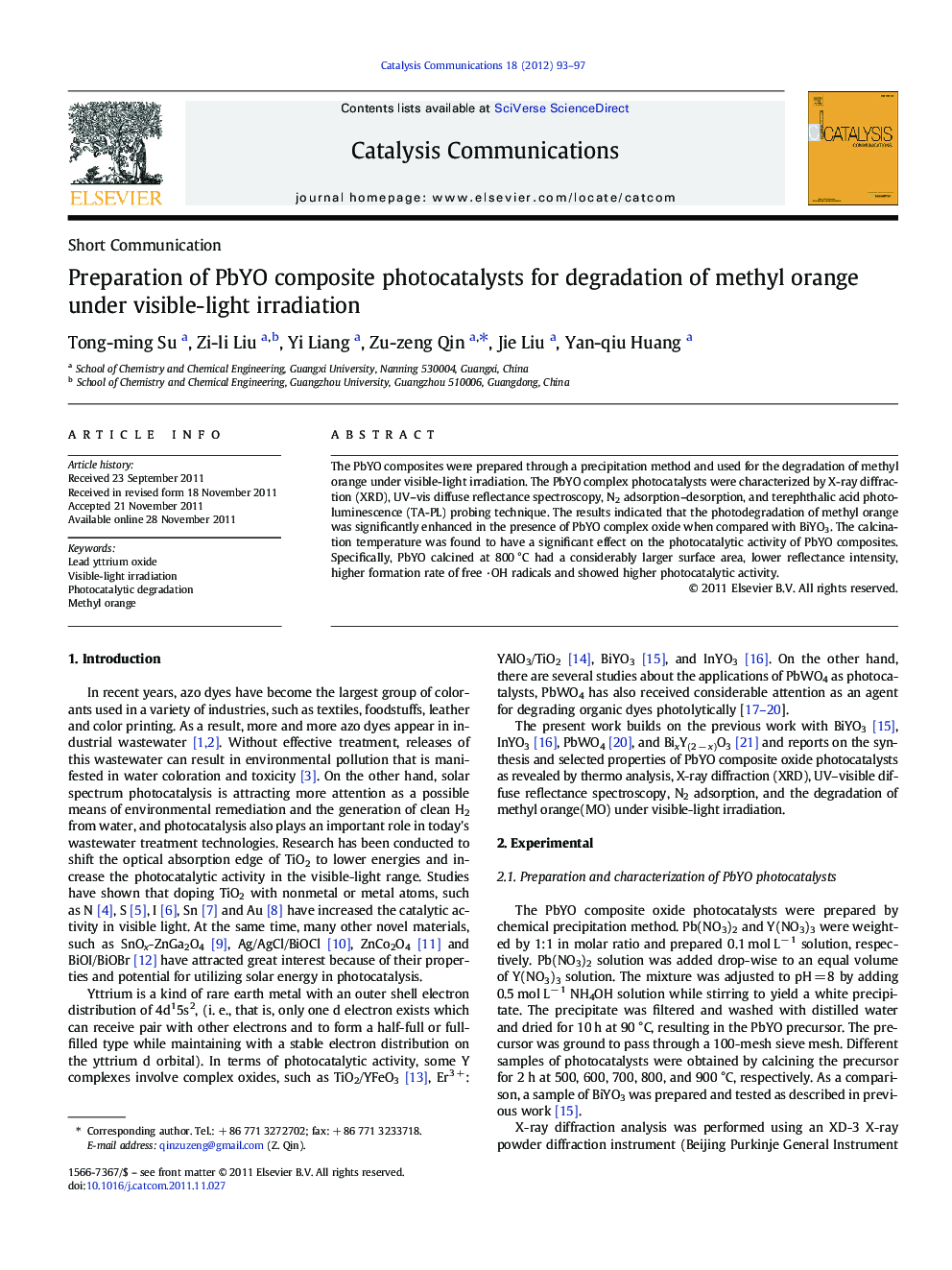| Article ID | Journal | Published Year | Pages | File Type |
|---|---|---|---|---|
| 50088 | Catalysis Communications | 2012 | 5 Pages |
The PbYO composites were prepared through a precipitation method and used for the degradation of methyl orange under visible-light irradiation. The PbYO complex photocatalysts were characterized by X-ray diffraction (XRD), UV–vis diffuse reflectance spectroscopy, N2 adsorption–desorption, and terephthalic acid photoluminescence (TA-PL) probing technique. The results indicated that the photodegradation of methyl orange was significantly enhanced in the presence of PbYO complex oxide when compared with BiYO3. The calcination temperature was found to have a significant effect on the photocatalytic activity of PbYO composites. Specifically, PbYO calcined at 800 °C had a considerably larger surface area, lower reflectance intensity, higher formation rate of free ·OH radicals and showed higher photocatalytic activity.
Graphical abstractFigure optionsDownload full-size imageDownload as PowerPoint slideHighlights► PbYO Composite photocatalyst has been prepared. ► Methyl orange was photo-degraded by PbYO catalyst under visible-light irradiation. ► PbYO Composite samples absorbed light in visible-light range. ► The formation rate of ·OH on the 800 °C PbYO is much higher than other samples. ► The photocatalytic activity of PbYO was significantly higher than BiYO3.
